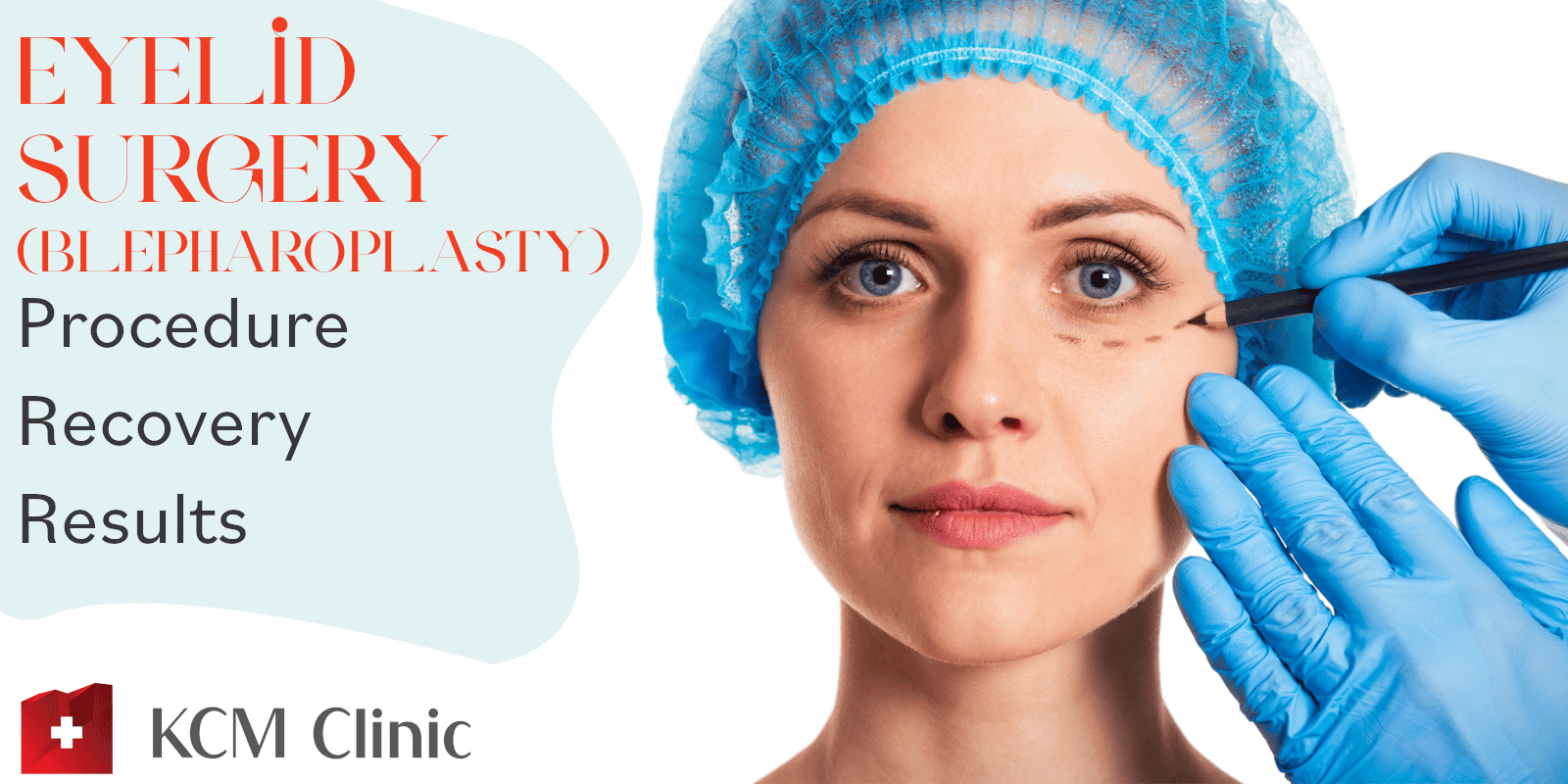Eyelid surgery, or blepharoplasty, is an eye surgery that adjusts defects or abnormalities of your eyelids; this can be done if droopy eyelids impair your vision or for aesthetic purposes.
Many patients choose to undergo eyelid surgery to get younger looking eyes and a fresher, more alert look. As we age, our skin loses elasticity causing droopy eyelids as a result. Blepharoplasty involves removing excess skin and fat from your upper and lower eyelids, improving the overall appearance of your eyes. Eyelid surgery can be combined with other aesthetic procedures such as facelift surgery, brow lift or neck lift for optimal results.
In this article, we are going to explain who is eligible for a blepharoplasty, how the procedure works and what you can expect after the surgery.
Is eyelid surgery right for you?
Eyelid surgery is typically recommended to individuals whose baggy or droopy eyelids disrupt their vision or wish to adjust them for aesthetic purposes. Patients should be in good health and have realistic expectations of what they want to achieve. The surgery is typically performed on patients who are 35 or older, but younger patients may also be eligible. You will discuss your options with the surgeon during your initial consultation.
Eyelid surgery: How does it work?
Here’s a breakdown of how a blepharoplasty is carried out in steps.
1. Anaesthesia
The surgeon will start with administering anaesthesia, which is typically a local anaesthetic that will make the eye area feel numb. This means that you will be awake during the procedure, but you will not feel any pain or discomfort. Depending on each individual case, a general anaesthetic may be used. You will be informed accordingly during your consultation.
2. Incisions
A blepharoplasty can be performed on the upper eyelids, on the lower eyelids, or both.
Upper blepharoplasty: if you’re having both upper and lower eyelid surgery, the surgeon will most likely start from your upper eyelids. The surgeon will make small incisions along the natural fold of your eyelid to separate the skin from the underlying tissue. Then any excess skin or fat will be removed. Loose muscle may be removed as well. At the end of the procedure, the incision will be closed with stitches, which will stay for 3 to 6 days.
Lower blepharoplasty: The surgeon will make the incision either inside the lower lid or below the eye in the natural fold of your eyelid. Then, any excess skin, fat or muscle will be removed and incisions closed. For both upper and lower blepharoplasty, scars will be hardly visible as they are hidden in the natural creases of your eyelids.
How do you prepare for eyelid surgery?
The first step of an eyelid surgery is having an initial consultation with your doctor. If you’re unsure of where to start, contact us at KCM Clinic anytime. One of our patient coordinators will be in touch with you. Our first conversation will involve questions about your overall health, any medications you are taking regularly, and what you wish to achieve from the procedure.
It is necessary to run a few tests before confirming your surgery and it is important that you stop smoking and drinking alcohol for as long as possible before and after the procedure; this will ensure that you will heal properly and with no complications.
Please also consider that, after surgery, your eyelids may be swollen and that you will have difficulties performing some activities. This is why we recommend that you prepare your home for your arrival: cook some meals in advance and get everything you need ahead of time so that you don’t need to leave home frequently.
Are there any side effects with eyelid surgery?
All surgical procedures have some degree of risk. Although complications from eyelid surgery are rare, they may occur and include: bleeding, dry or irritated eyes, infection, abnormal discoloration of the eyelids, abnormal folding of the eyelid skin, difficulty closing your eyes, or a blurred vision.
What you can expect after eyelid surgery?
Right after the surgery, the surgeon will apply ointment and cover your eyes with cold compresses. You might have a blurry vision and be sensitive to light, and your eyes may feel dry or watery. In order to minimise swelling and bruising, it is recommended to sleep keeping your head up for a few days so that fluids don’t build up on your face and eyelids. You will be advised to use cold or warm compresses, which will also help with healing.
For the first week after surgery, do not rub, touch or contact your eyes. Stitches are typically removed after one week. Seven to ten days later, you can apply makeup again. During the first few weeks after surgery, avoid intense workouts or heavy lifting, bathing, sunbathing, and the sauna. It is also recommended to avoid cigarettes and alcohol consumption as long as possible to ensure proper healing and reduce the risk of having visible scars once healed.
Eyelid surgery can help you get a youthful appearance and fresher, more alert looking eyes. As skin ages, it loses its elasticity, and combined with the constant pull from gravity, skin collects in the upper and lower eyelids, causing wrinkles or bulges. This is a normal process but eyelid surgery can help you get a more youthful look. Results of a blepharoplasty will be effective for at least 5 to 7 years, and lower blepharoplasty rarely has to be performed more than once.
Send Request
Register
Visits, hospital procedures
Bariatric Surgery Center
Plastic Surgery Center
Spine Surgery Center
Dental Clinic
OMEGA Imaging Diagnostic Center
Work hours
KCM Clinic Wrocław
Chat KCM Clinic
Locations
KCM Clinic Jelenia Góra
KCM Clinic Wrocław
Parking








